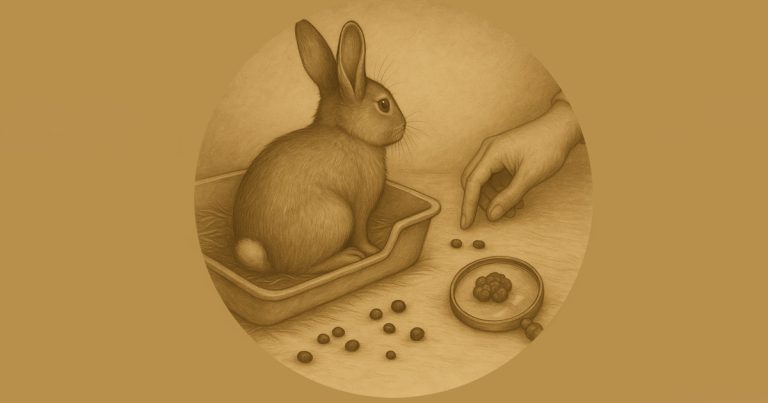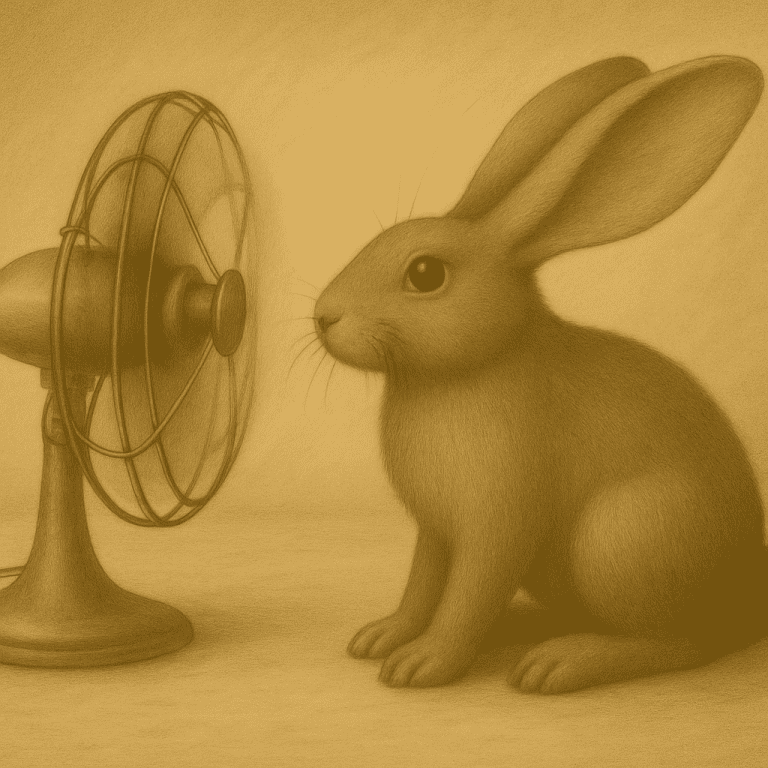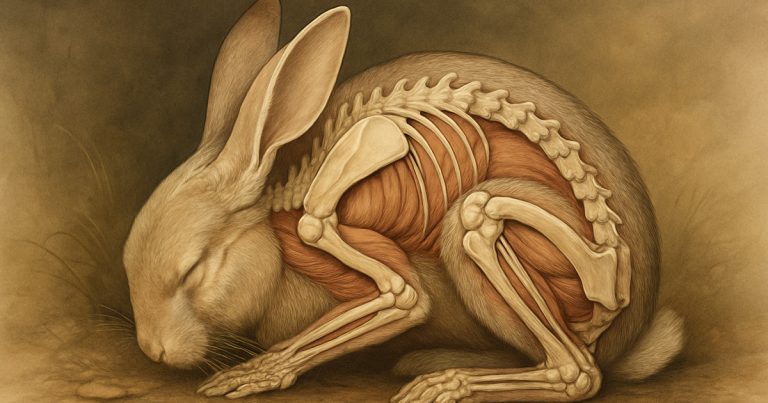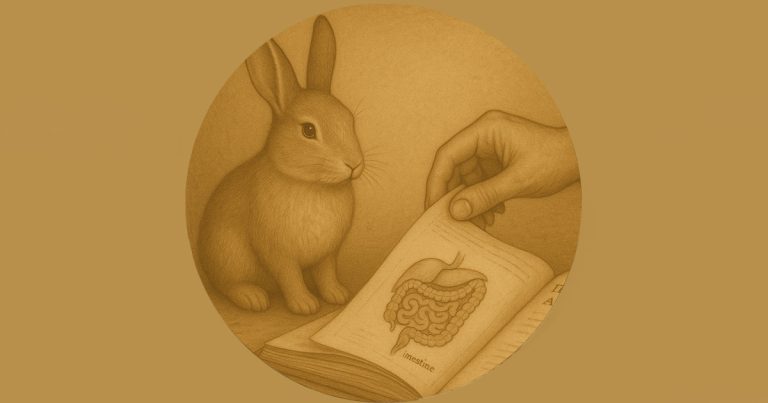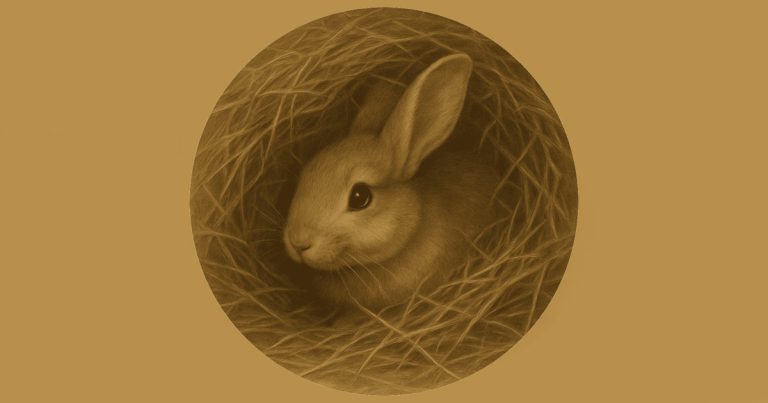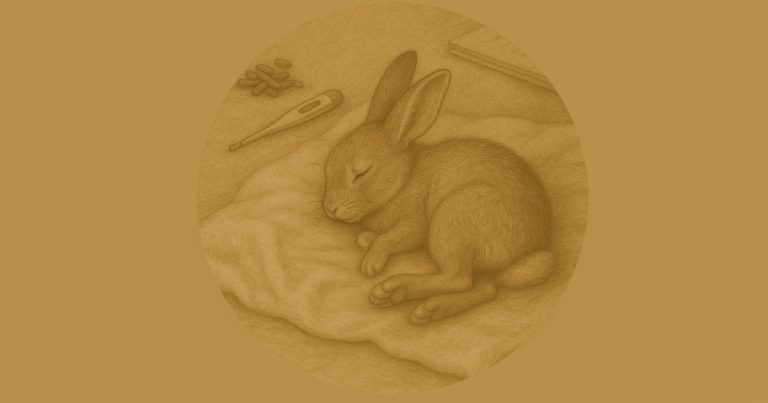Myxomatosis and RVHD
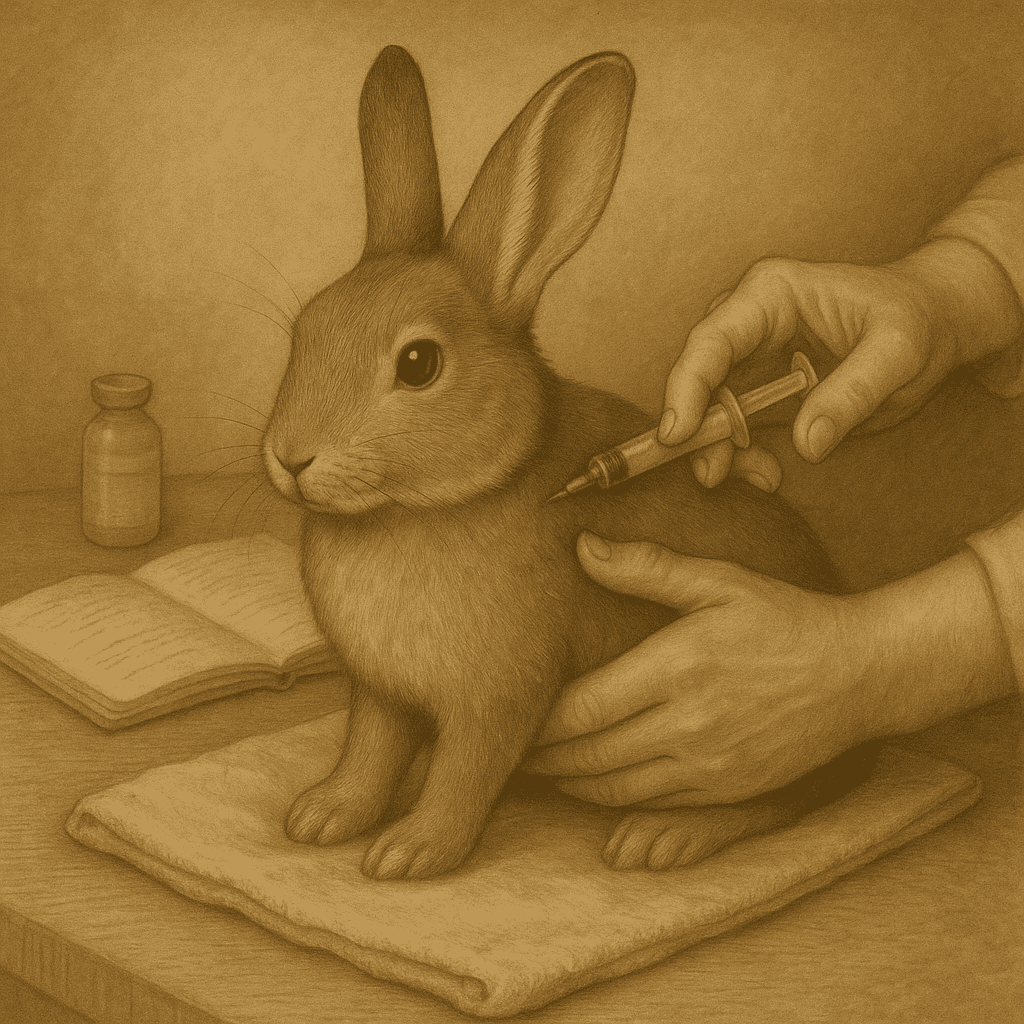
Rabbit Vaccinations: What You Need to Know
(No Scaremongering. Just Facts.)
Introduction: Why We Vaccinate
Myxomatosis and RVHD – Rabbits are hardy little creatures. Give them a chewed laptop cable, a noisy toddler, or a garden full of mischief, and they’ll bounce back like nothing happened. But when it comes to certain viruses, they’re tragically outmatched.
Two in particular—Myxomatosis and Rabbit Viral Haemorrhagic Disease (RVHD)—don’t just cause illness. They cause devastation. Fast. Often without warning. A rabbit can be happily eating one day and gone the next.
These aren’t obscure risks. They’re present, persistent, and widely spread—via flies, contaminated greens, hay, clothing, and even human hands. You may never see the threat coming. But when it hits, it’s often too late.
At Redbeck, we don’t vaccinate out of routine or pressure.
We vaccinate because we’ve seen what happens when people don’t.
The silence. The confusion. The “but he was fine yesterday.”
You never forget those cases.
Vaccination isn’t a guarantee. But it’s the best line of defence we have.
It’s not just about disease prevention. It’s about peace of mind—knowing that you’ve given your rabbit every chance to live, thrive, and grow old safely.
The Big Two (or Three)
Rabbit Viral Haemorrhagic Disease Variant (RVHD2)
- A newer, mutated strain.
- Often slower onset compared to RVHD1 — but still deadly.
- Can infect rabbits of any age, even very young kits.
- Transmission: Hay, greens, contaminated shoes, hands, clothing, insects.
Rabbit Viral Haemorrhagic Disease (RVHD1)
- Caused by a calicivirus.
- Internal bleeding. Death within hours to days.
- Often no outward signs — the rabbit simply collapses.
- Highly contagious and incredibly hardy in the environment.
Myxomatosis
- Caused by the Myxoma virus.
- Spread through blood-sucking insects (fleas, mosquitoes) and direct contact.
- Symptoms: Swelling of the eyes, face, and genitals; respiratory distress; blindness.
- Recovery without vaccination is almost unheard of.
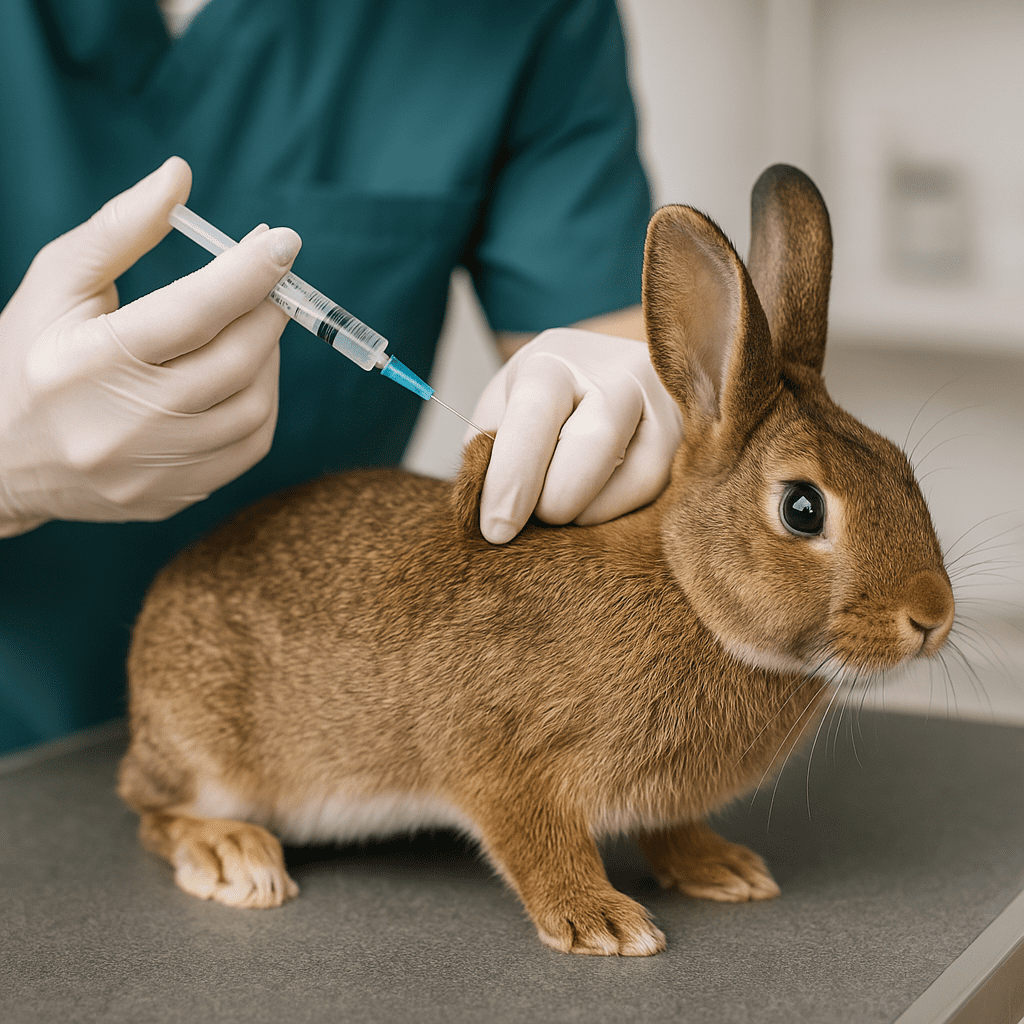
The Modern Vaccine: Nobivac Myxo-RHD PLUS (and Other Options)
Today, we have several vaccine options to protect against Myxomatosis and both RVHD strains.
The most common vaccine is:
- Nobivac Myxo-RHD PLUS — protects against Myxomatosis, RVHD1, and RVHD2 in a single annual injection.
Other vaccines include:
- Filavac VHD K C+V — protects against RVHD1 and RVHD2 only.
- Eravac — protects against RVHD2 only.
- Yurvac — protects against RVHD1 and RVHD2 only.— the latest rabbit vaccine, offering protection against RVHD1 and RVHD2, including all known emerging variants.
Developed in response to the evolving virus strains, Yurvac provides the most comprehensive and up-to-date defence currently available.
Important: If your rabbit only receives Filavac, Eravac, or Yurvac, they are NOT protected against Myxomatosis.
- Given by subcutaneous injection (a quick jab under the skin).
- Protection develops within three weeks.
- Vaccination from 5 weeks old.
- Annual boosters are essential — immunity fades over time.
Before combined vaccines, owners needed multiple spaced-out injections. Now, it’s safer, faster — but always check what your vet is using.
One jab. Once a year. Protection that could save their life.
A Note About Vaccination Efficiency
No vaccine offers 100% protection — not for rabbits, not for humans, not for anything.
Nobivac Myxo-RHD PLUS has a very high success rate, but immunity depends on:
- The rabbit’s individual immune system
- The correct storage and handling of the vaccine (temperature control matters)
- Administering the vaccine at the right time (not during incubation of disease)
Reported studies show:
- Over 95% protection against Myxomatosis, RVHD1, and RVHD2 when given correctly.
- Some vaccinated rabbits exposed to very high viral loads (e.g., a heavily contaminated area) may still fall ill — but they often have milder symptoms and a higher chance of survival.
In real-world terms:
- Vaccinated rabbits have a fighting chance even if exposed.
- Unvaccinated rabbits almost always have no chance at all.
Vaccination isn’t a magic shield.
It’s a life-saving layer of armour — and the best defence we’ve got. Signs to Watch For
What ToCommon Questions We Hear at Redbeck
“My rabbit never goes outside. Why vaccinate?”
Because viruses don’t knock first.
RVHD and Myxomatosis can arrive on hay, greens, your shoes, your clothes, insects through an open window — even carried by your dog or cat without them getting ill.
Indoor rabbits are just as much at risk.
“Is the vaccine dangerous?”
Serious reactions are extremely rare.
Most rabbits have no problem at all.
At worst, you might see:
- A little swelling at the injection site
- Slightly reduced appetite for 24 hours
- A quieter than normal bunny for a day
In real-world risk terms:
- Vaccine side effects = small inconvenience
- The diseases = almost certain death
“Can a vaccinated rabbit still get sick?”
Very rarely.
Vaccination gives strong protection but not an absolute guarantee.
Breakthrough infections can happen if:
- The rabbit was already infected before vaccination
- The rabbit’s immune system is weak
- The vaccine wasn’t stored, handled, or administered properly
- Boosters were missed
But here’s the truth:
A vaccinated rabbit has a fighting chance. An unvaccinated one doesn’t.
Why Redbeck Insists on Vaccinations
Simple.
We house many rabbits — including the elderly, the vulnerable, and those already living with underlying conditions.
For their safety, and for the safety of every rabbit who boards with us, full vaccination is non-negotiable.
It’s not just Redbeck policy.
It’s required by our insurance.
And frankly, it’s basic best practice — just like any proper dog or cat boarding kennel insisting on up-to-date vaccines for:
- Distemper
- Parvovirus
- Kennel cough
In the rabbit world, RVHD and Myxomatosis are just as deadly.
No vaccination, no boarding.
No debate.
It’s how we protect them — and it’s why rabbits come home from Redbeck healthy and happy.: Laugh If You Like
Real Stories We Wish We Didn’t Have to Tell
We’ve seen it with our own eyes.
We’ve stood beside owners watching their healthy rabbit collapse without warning — bleeding internally from RVHD, gone within hours.
We’ve watched a boarding centre and Rescues lock its doors in quarantine because a single, unvaccinated rabbit brought in RVHD2 — wiping out an entire room before the first symptoms were even noticed.
We’ve sat with heartbroken families who thought Myxomatosis was a “wild rabbit problem” — until it took their own.
It’s brutal.
It’s fast.
And it’s almost always avoidable.
One jab. One day. One decision. It matters more than you think.
A Slightly More Technical Note (for the curious)
Like most viruses, RVHD comes in multiple strains — and more are likely to emerge.
While Myxomatosis is fairly easy to recognise clinically, RVHD is far trickier.
Currently, the only definitive way to confirm RVHD infection in the UK is by post-mortem testing — usually examining liver or spleen samples.
- Routine tests can confirm RVHD infection but do not normally distinguish RVHD1 from RVHD2 unless specialist PCR strain typing is requested.
- Blood tests in live rabbits are unreliable for diagnosing or differentiating RVHD strains.
- In everyday practice, vets are usually told: RVHD positive or negative — nothing more.
You may hear people talk about “new variants” or “mutations,” but without specialist lab sequencing, these claims remain unproven at normal practice level.
Some extra context:
- Viral survival: RVHD1 and RVHD2 can survive for months on surfaces. Only specific disinfectants (like Virkon S) are effective.
- Incubation: Myxomatosis can take 5–14 days to appear. RVHD can kill in less than 6 hours after first signs.
- Carrier state: A rare few rabbits survive RVHD2 and may shed virus for weeks.
- Wild reservoirs: Wild rabbits continually reintroduce the virus into the environment.
In short — it’s not if the virus arrives. It’s when.
Final Thought: A Simple Choice
At Redbeck, every rabbit boarding with us must be fully vaccinated. No exceptions.
One injection. Once a year. A lifetime of not standing over a lifeless hutch, whispering “If only.”
We vaccinate because we love them. Because we owe it to them. And because it’s one fight we can actually win.
Further Reading and References:
Copyright © Redbeck Rabbit Boarding. This article is free to share with credit. No part may be copied, edited, or republished without permission.

